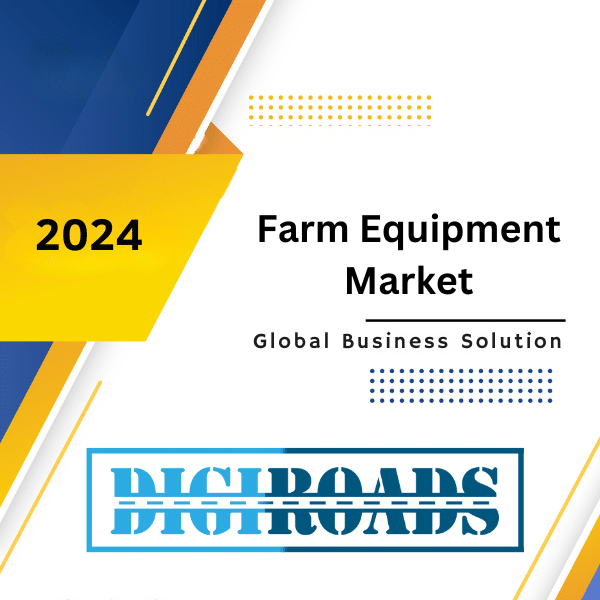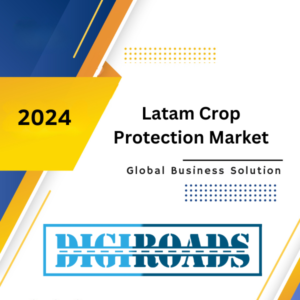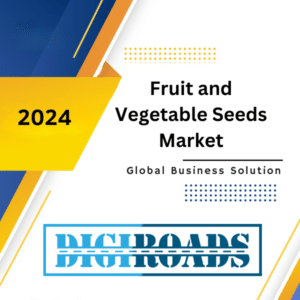Description
Farm Equipment Market: Opportunity Analysis and Industry Forecast, 2024-2034
Farm Equipment Market Overview:
The global farm equipment market is projected to grow from USD 113.91 billion in 2024 to USD 196.76 billion by 2034, representing a compound annual growth rate (CAGR) of 5.8% during the forecast period from 2024 to 2034.
The farm equipment market is a vital sector within the agriculture industry, encompassing a wide range of machinery and tools used for various farming operations. These include tractors, harvesters, plows, seeders, irrigation systems, and implements for soil preparation, planting, and harvesting.
Key factors driving the farm equipment market include:
- Mechanization: Increasing mechanization in agriculture, driven by the need to improve efficiency, reduce labor costs, and cope with labor shortages.
- Technological Advancements: Continuous innovation in farm equipment, including precision agriculture technologies, GPS guidance systems, and automation, improving productivity and reducing environmental impact.
- Growing Farm Sizes: Consolidation of farms and expansion of farming operations, leading to increased demand for larger and more efficient equipment.
- Government Support: Subsidies, incentives, and policies promoting mechanization and modernization of agriculture in many countries, driving investments in farm equipment.
- Environmental Concerns: Adoption of eco-friendly practices and equipment to reduce fuel consumption, emissions, and soil compaction, promoting sustainable agriculture.
Geographically, the farm equipment market is diverse, with significant presence in regions such as North America, Europe, and Asia Pacific. North America and Europe are characterized by a high degree of mechanization and advanced technologies, while Asia Pacific, including countries like China and India, is witnessing rapid growth due to increasing mechanization and modernization of agriculture.
Overall, the farm equipment market is expected to continue growing as farmers seek to improve efficiency, productivity, and sustainability in agricultural operations, driving investments in advanced machinery and equipment.
Farm Equipment Market – Report Coverage:
The “Farm Equipment Market Report – Forecast (2024-2034)” by Digiroads Consulting, covers an in-depth analysis of the following segments in Market.
| Attribute | Segment |
| By Product Type: |
|
| By Category |
|
| By Ownership |
|
| By Location |
|
Recent Developments:
Focus on Automation and Autonomy:
- Advancements in Autonomous Technologies: Companies are actively developing and testing autonomous tractors, harvesters, and other farm equipment. These advancements aim to increase efficiency, reduce labor costs, and improve operational precision.
- Robotics Integration: The integration of robotics for specific tasks like fruit picking, weed control, and livestock management is gaining traction. This allows for automation of repetitive tasks and improves accuracy.
Increased Focus on Precision Agriculture:
- Data-Driven Farming Solutions: Farm equipment is becoming increasingly integrated with precision agriculture technologies. This allows for data collection on soil conditions, crop health, and yield, enabling farmers to make data-driven decisions and optimize resource use.
- Smart Implementations: Developments in sensor technology and automation are leading to the creation of “smart” farm implements that can adjust settings and operations based on real-time field data..
Sustainability Considerations:
- Electric and Hybrid Equipment: There’s a growing emphasis on developing electric and hybrid farm equipment to reduce reliance on fossil fuels and minimize greenhouse gas emissions.
- Precision Technologies for Resource Optimization: Advancements in precision agriculture technologies like variable rate application of fertilizers and targeted spraying contribute to more efficient resource utilization and reduced environmental impact.
Examples of Recent Developments:
- February 2024: John Deere, a major farm equipment manufacturer, launched its new line of electric tractors with high-horsepower capabilities, indicating a significant push towards electric farm equipment.
Farm Equipment Market Dynamics:
- Technological Advancements: Advances in technology, such as precision agriculture, automation, and data analytics, are transforming the farm equipment landscape. These innovations improve efficiency, productivity, and sustainability in farming practices, driving demand for modernized equipment.
- Shift Toward Mechanization: There is a global trend toward mechanization in agriculture, driven by the need to increase productivity, address labor shortages, and reduce production costs. This shift is leading to increased adoption of mechanized farm equipment such as tractors, harvesters, and seeders.
- Environmental Concerns and Regulations: Growing environmental concerns and government regulations are influencing the farm equipment market. Stakeholders are increasingly focusing on sustainable farming practices and eco-friendly equipment options to minimize environmental impact and comply with regulations.
- Economic Factors: Economic conditions, including commodity prices, interest rates, and government subsidies, significantly impact the farm equipment market. Fluctuations in these factors can affect farmers’ purchasing power and investment decisions in new equipment.
- Farm Consolidation and Scale: Farm consolidation and the trend toward larger-scale farming operations are driving demand for more efficient and higher-capacity equipment. Larger farms require equipment that can cover more acreage and handle increased production volumes, leading to a growing market for larger and more powerful machinery.
- Global Food Demand: The increasing global population and rising demand for food are driving the need for improved agricultural productivity. Farm equipment plays a critical role in meeting this demand by enabling farmers to maximize yields and optimize production efficiency.
- Weather Patterns and Climate Change: Weather patterns and climate change can have significant impacts on agricultural productivity and equipment usage. Extreme weather events, such as droughts or floods, can disrupt farming operations and influence equipment purchasing decisions.
- Trade Policies and Market Access: Trade policies, tariffs, and market access agreements can affect the availability and affordability of farm equipment. Changes in trade dynamics between countries can impact the flow of equipment, components, and technology across borders, influencing market dynamics.
Key Market Players:
Product/Service launches, approvals, patents and events, acquisitions, partnerships and collaborations are key strategies adopted by players in the Farm Equipment Market. The top 10 companies in this industry are listed below:
- Bucher Industries AG
- AGCO Corp.
- Deere & Company
- EXEL Industries
- CLAAS KGaA mbH
- ISEKI & CO. LTD.
- CNH Industrial N.V.
- Krone UK Group
- Kubota Corporation
- LEMKEN GmbH & Co. KG
- Mahindra & Mahindra Ltd.
- Mitsubishi Mahindra Agricultural Machinery Co. Ltd
- SDF S.p.A.
- Tractor and Farm Equipment Limited (TAFE)
Key Benefits For Stakeholders:
- Increased Efficiency and Productivity: Modern farm equipment is designed to streamline agricultural processes, reducing manual labor and increasing overall efficiency. This leads to higher productivity levels for farmers, allowing them to accomplish more in less time.
- Cost Savings: By investing in advanced farm equipment, stakeholders can benefit from long-term cost savings. These machines often require less maintenance, consume fewer resources, and contribute to higher yields, ultimately resulting in reduced operational costs for farmers.
- Enhanced Precision and Accuracy: Many farm equipment technologies, such as GPS-guided tractors and precision agriculture tools, enable farmers to work with greater precision and accuracy. This leads to optimized resource usage, minimized waste, and improved crop quality, benefiting both farmers and consumers.
- Improved Safety: Modern farm equipment is equipped with various safety features and technologies to protect operators and workers from potential hazards. By prioritizing safety, stakeholders can create a safer working environment for everyone involved in agricultural operations.
- Environmental Sustainability: Sustainable farming practices are increasingly important in today’s agricultural industry. Advanced farm equipment often incorporates eco-friendly technologies, such as reduced emissions engines and precision irrigation systems, helping stakeholders minimize their environmental impact and comply with regulations.
- Market Growth Opportunities: As the demand for food continues to rise globally, there are significant growth opportunities in the farm equipment market. Stakeholders can capitalize on this growing demand by investing in innovative technologies and expanding their product offerings to meet the evolving needs of farmers worldwide.
Contact us for any inquiry.
Table of Contents
- INTRODUCTION
1.1 Study Assumptions & Market Definition
1.2 Scope of the Study
- RESEARCH METHODOLOGY
- EXECUTIVE SUMMARY
- MARKET DYNAMICS
4.1 Market Overview
4.2 Market Drivers
4.3 Market Restraints
4.4 Porter’s Five Forces Analysis
4.4.1 Bargaining Power of Suppliers
4.4.2 Bargaining Power of Buyers
4.4.3 Threat of New Entrants
4.4.4 Threat of Substitute Products
4.4.5 Intensity of Competitive Rivalry
- MARKET SEGMENTATION
-
By Product Type:
-
Tractors
-
Rotavators
-
Wheel Type
-
Crawler Type
-
-
Threshers & Dehuskers
- Wheel Type
- Crawler Type
- Power Tillers
- Wheel Type
- Crawler Type
- Power Weeder
- Wheel Type
- Crawler Type
- Plough
- Baler
- Seed Drill
-
-
By Category:
-
Tractor Pulled / Attachment
-
Self-Propelled
-
-
By Ownership:
-
Individual
-
Rental
-
-
By Location:
-
North America
-
Latin America
-
Europe
-
East Asia
-
South Asia & Pacific
-
Middle East & Africa
-
- COMPETITIVE LANDSCAPE
6.1 Most Adopted Strategies
6.2 Market Share Analysis
6.3 Company Profiles
- Bucher Industries AG
- AGCO Corp.
- Deere & Company
- EXEL Industries
- CLAAS KGaA mbH
- ISEKI & CO. LTD.
- CNH Industrial N.V.
- Krone UK Group
- Kubota Corporation
- LEMKEN GmbH & Co. KG
- Mahindra & Mahindra Ltd.
- Mitsubishi Mahindra Agricultural Machinery Co. Ltd
- SDF S.p.A.
- Tractor and Farm Equipment Limited (TAFE)
- MARKET OPPORTUNITIES AND FUTURE TRENDS





